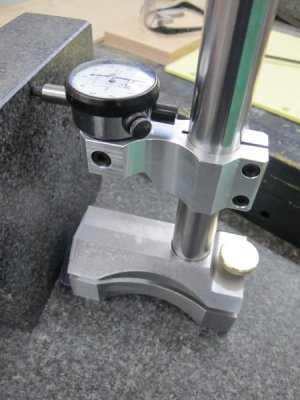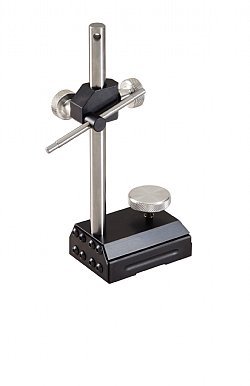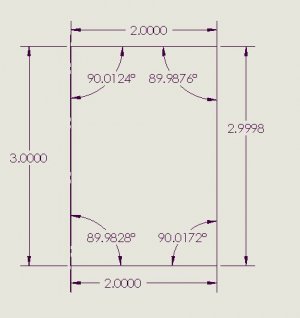- Joined
- Jul 20, 2014
- Messages
- 1,386
How are most home hobbyists checking squareness/perpendicularity when building something?
I'd like to make or modify a stand that holds an indicator for checking squareness.
Can a bearing ball be used with a surface gage? I have vintage Starrett and B&S surface gages and they all have a V notch.
What is this V notch for? I've seen some nice checker stands with radius-ed metal "bumper" for checking squareness. Or, can this radius be machined and added to
an existing stand?
A cylindrical square would be nice, but the Murkens is rare and the Suburban tools is pricey and no magnet.
A Murkens or Hermann Schmitt stand can probably be modified but again, very pricey.
One of these tools can be made but the stand itself must have a very square shaft to the base. How do you check how square your part is?
Attached are images for OxTools home made stand. Tom Lipton. Very sturdy looking. (of course, Tom has every tool in the book to make these things.)
What is good enough for a home shop machinist?


I'd like to make or modify a stand that holds an indicator for checking squareness.
Can a bearing ball be used with a surface gage? I have vintage Starrett and B&S surface gages and they all have a V notch.
What is this V notch for? I've seen some nice checker stands with radius-ed metal "bumper" for checking squareness. Or, can this radius be machined and added to
an existing stand?
A cylindrical square would be nice, but the Murkens is rare and the Suburban tools is pricey and no magnet.
A Murkens or Hermann Schmitt stand can probably be modified but again, very pricey.
One of these tools can be made but the stand itself must have a very square shaft to the base. How do you check how square your part is?
Attached are images for OxTools home made stand. Tom Lipton. Very sturdy looking. (of course, Tom has every tool in the book to make these things.)
What is good enough for a home shop machinist?



